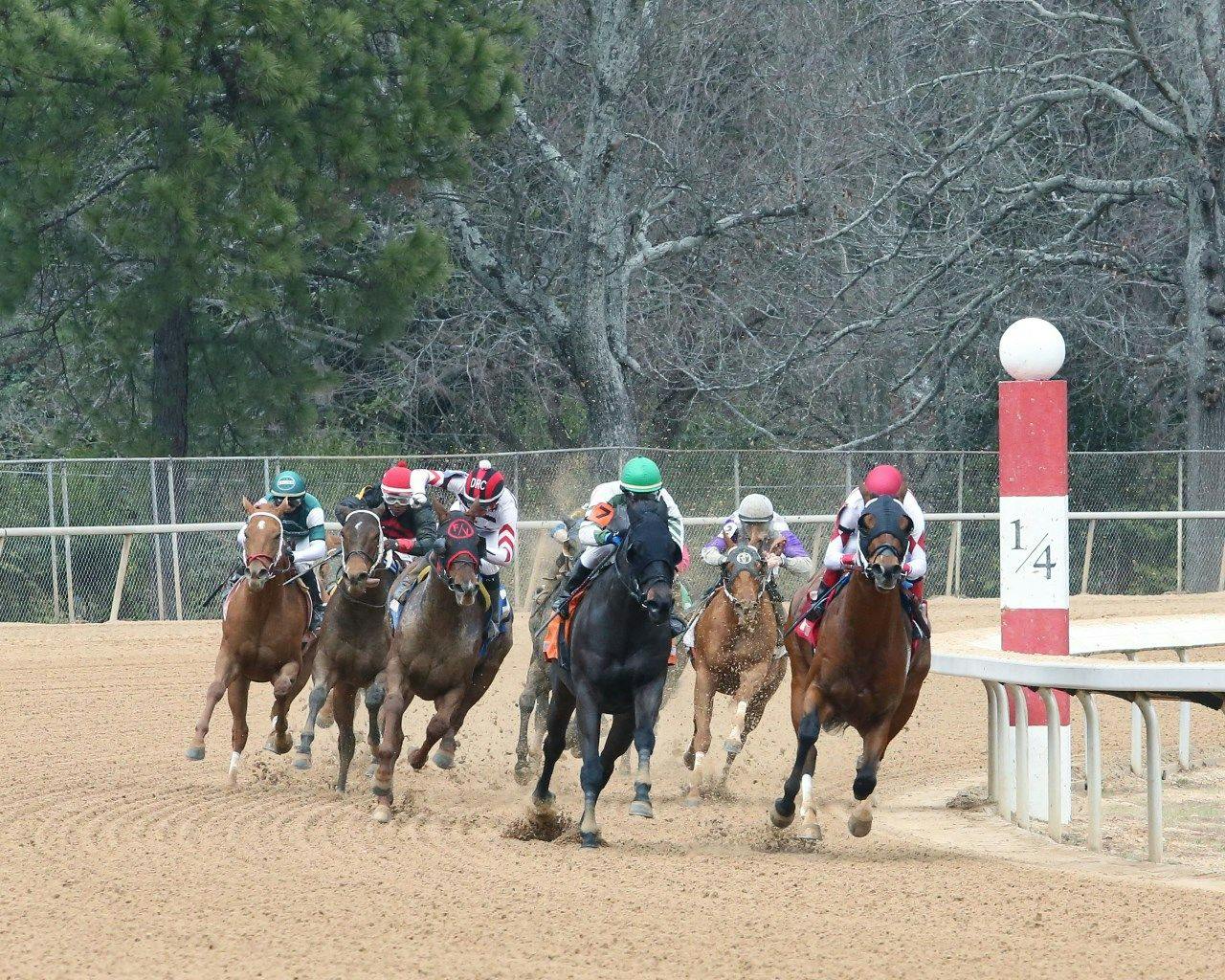Defining the quarter pole, eighth pole, and more

Racing past the quarter pole at Oaklawn Park - Coady Photography
Hang around horseplayers for any length of time, and you might start wondering about the odd phraseology they use to describe certain points within a race.
Raise your hand if you’ve heard or read sentences like these…
“He challenged for the lead at the quarter pole.”
“She launched her bid at the three-sixteenths pole.”
“He checked in traffic at the seven-eighths pole.”
If you’ve determined all these “pole” references must have something to do with the colorful striped poles that dot the inner circumference of a typical North American racetrack, congratulations—you’re correct! But what do the exact names mean? It’s really not so complicated.
What can a horse's auction price tell you about its likelihood of winning when handicapping a race?
— TwinSpires Racing 🏇 (@TwinSpires) September 23, 2021
More than you may think!
Let @J_Keelerman explain ⬇️ https://t.co/WL0X92v3d7
What determines the name of a pole?
Pole names indicate distances—to be specific, the distance between the pole and the finish line. The eighth pole is one-eighth of a mile (one furlong) from the finish line. The quarter pole is a quarter of a mile (two furlongs) from the finish line. The three-sixteenths pole is three-sixteenths of a mile from the finish line, and so on.
It’s important to note pole names do not describe how much of a race has elapsed. Since races can start at a variety of points around a given track, pole names would change constantly if they measured elapsed running distances. So when horses complete the opening quarter mile of a six-furlong sprint, they are not passing the quarter pole—there’s still half a mile remaining, so they are passing the half-mile pole.
Identifying the poles
So how can you tell which pole is which? The easiest way is to count poles, starting at the finish line and counting backward around the track, opposite to the direction the horses run. Each pole you see represents a sixteenth of a mile. The first pole from the finish line is the sixteenth pole, the second is the eighth pole, the third is the three-sixteenths pole, etc.
In addition, poles are colored differently to aid identification. Model rules call for the markers denoting quarter-mile distances (the quarter pole, the half-mile pole, the three-quarter pole, etc.) to be red with white stripes. Poles marking distances in eighths of miles (the eighth pole, the three-eighths pole, the five-eighths pole, etc.) are green with white stripes, while all the sixteenth poles are black with white stripes.
Exceptions to the rules
There are a couple of exceptions to keep in mind. If a race is longer than the circumference of a track, the horses will pass some poles twice. For example, the 1 1/4-mile Kentucky Derby (G1) starts at the Churchill Downs quarter pole, and the horses complete an initial quarter-mile sprint down the homestretch before embarking on a complete loop around the one-mile track. The poles only become accurate after the horses have passed the finish line for the first time.
In addition, not all races end at the traditionally marked finish line. Due to quirks of specific configurations, some tracks designate the sixteenth pole as an alternate finish line for certain distances. In these instances, horses passing the quarter pole have only three-sixteenths of a mile left to run, rather than a full quarter mile.
Congratulations, you’re up to speed on identifying the poles around a racetrack! Now you can determine at a glance how much of a race remains to be run.
ADVERTISEMENT



